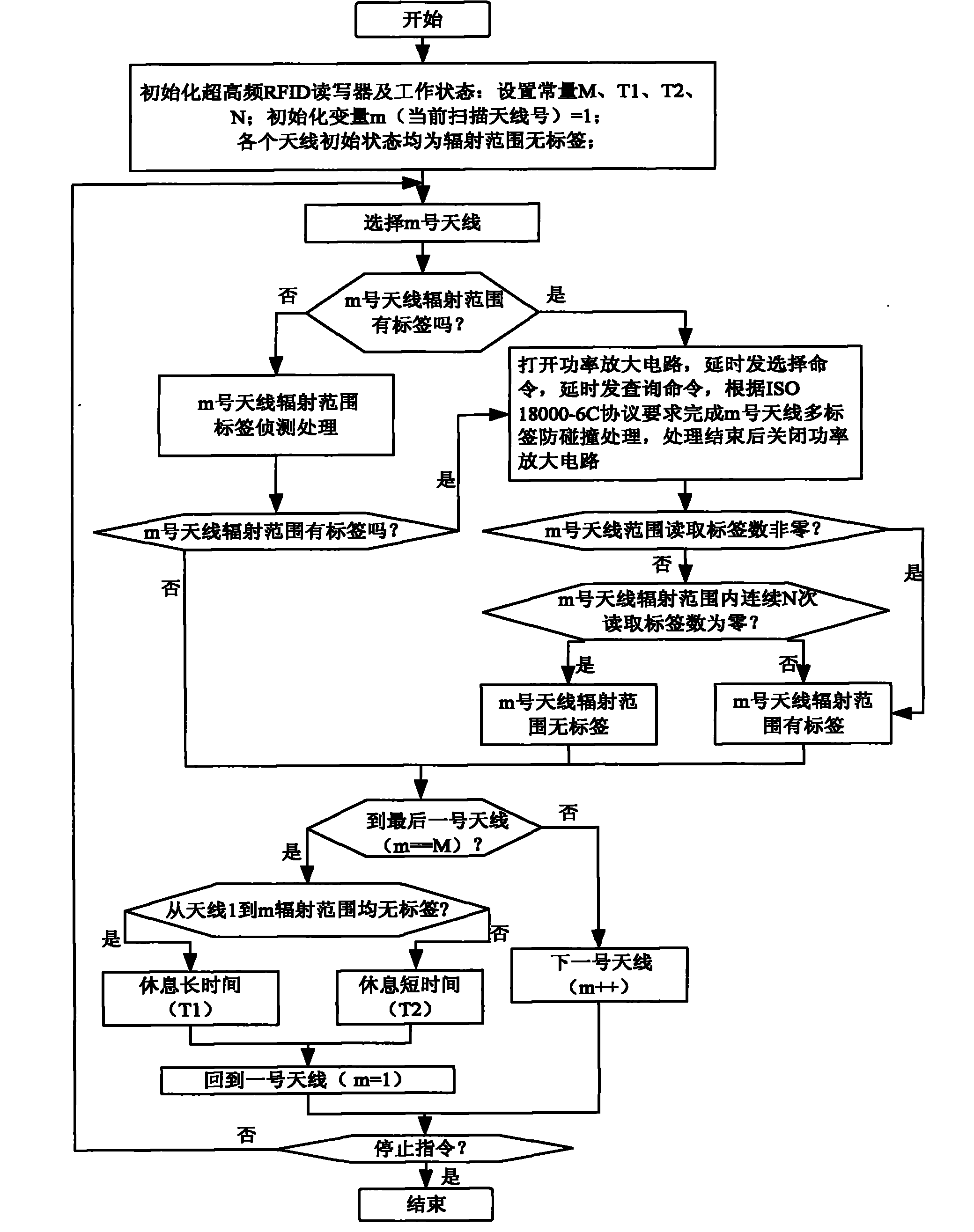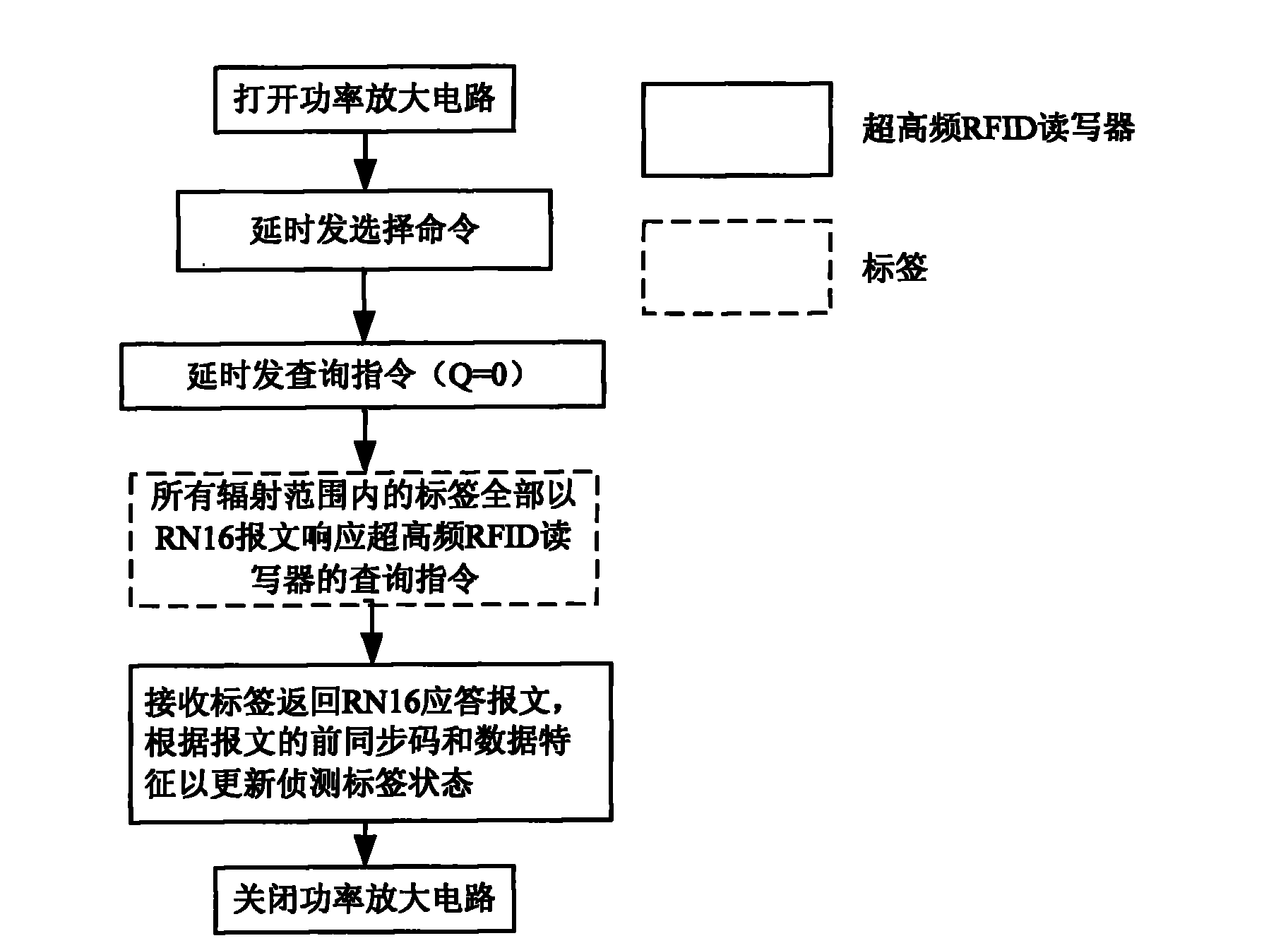Label detection and dynamic load optimization method for ultrahigh-frequency RFID reader
A technology of dynamic optimization, reader, applied in the direction of instruments, electromagnetic radiation induction, inductive record carriers, etc., can solve the problems of high heat generation of the working power amplifier circuit, inability to effectively adapt to the working environment, and high technical requirements, and achieve dynamic load distribution. Reasonable, conducive to long-term stable work and the effect of reducing technical difficulty
- Summary
- Abstract
- Description
- Claims
- Application Information
AI Technical Summary
Problems solved by technology
Method used
Image
Examples
Embodiment Construction
[0030] Below in conjunction with accompanying drawing, take ISO 18000-6C (a kind of ultra-high frequency radio frequency identification international standard agreement) agreement in conjunction with four antenna reader-writers as an example to specifically describe the embodiment of the present invention, the ultra-high frequency RFID reader-writer includes baseband processing and radio frequency There are two parts in the front end. The RF front end generally includes a radio frequency transmitting circuit, a radio frequency receiving circuit and an antenna. The radio frequency transmitting circuit includes a power amplifier circuit. The antenna includes an antenna switching circuit and an antenna connection port. labels such as figure 1 As shown, the tag detection and load dynamic optimization method of the UHF RFID reader of the present invention will figure 1 After instantiating relevant parameters in , implement the following steps:
[0031]Step 1, initialize the UHF RF...
PUM
 Login to View More
Login to View More Abstract
Description
Claims
Application Information
 Login to View More
Login to View More - R&D
- Intellectual Property
- Life Sciences
- Materials
- Tech Scout
- Unparalleled Data Quality
- Higher Quality Content
- 60% Fewer Hallucinations
Browse by: Latest US Patents, China's latest patents, Technical Efficacy Thesaurus, Application Domain, Technology Topic, Popular Technical Reports.
© 2025 PatSnap. All rights reserved.Legal|Privacy policy|Modern Slavery Act Transparency Statement|Sitemap|About US| Contact US: help@patsnap.com



